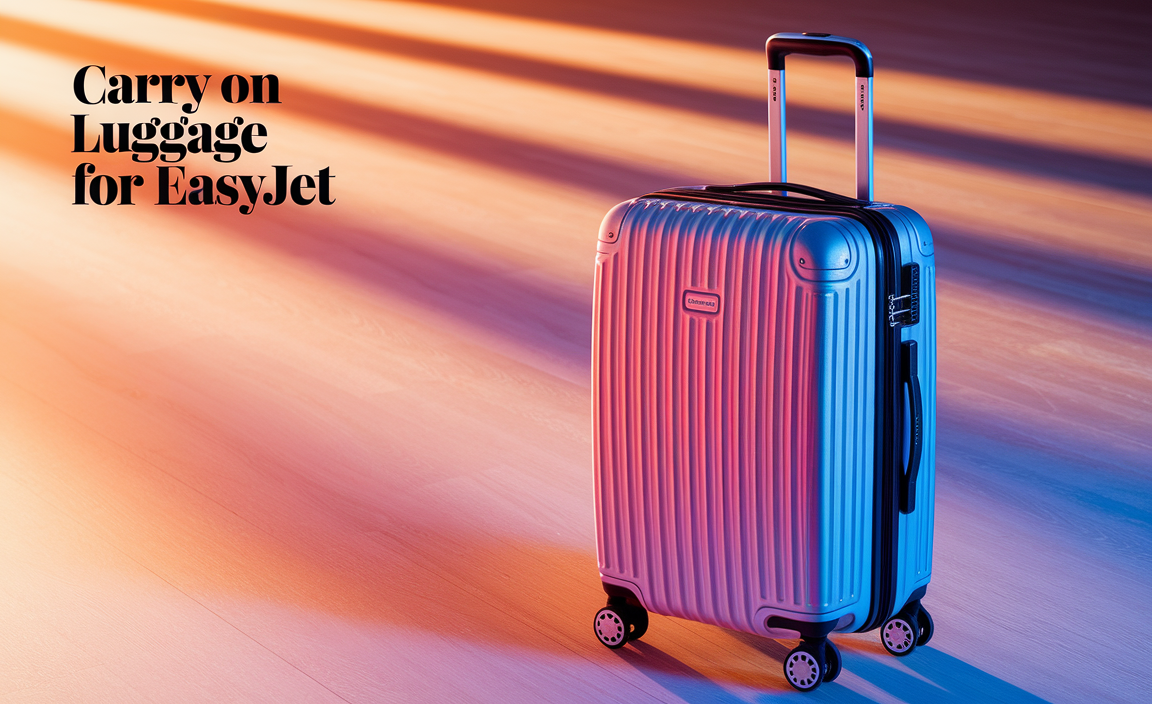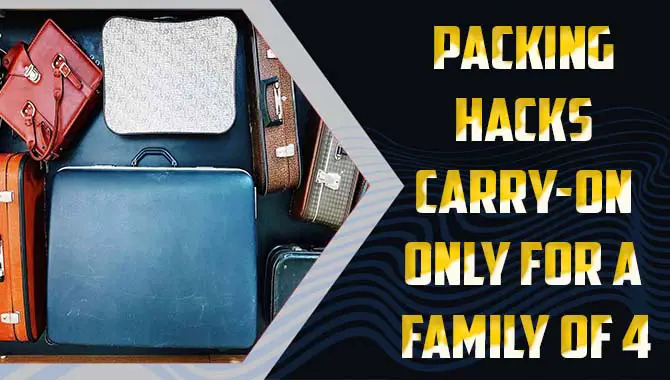Baggage claim tickets may seem like a simple piece of paper with a few random numbers and letters, but they hold a wealth of information that can make your travel experience much smoother.
Whether you’re a seasoned traveller or a first-time flyer, understanding the details and importance of a baggage claim ticket can save you time and stress at the airport. We will dive into the ins and outs of baggage claim tickets, from what they are to how to read them and why they are essential for your luggage retrieval process.
You’ll clearly understand this small yet crucial document and be equipped to navigate the often hectic atmosphere of the baggage claim area. So, let’s unpack the mystery of the baggage claim ticket and discover how it can make a significant difference in your travel journey.

Importance Of Baggage Claim
Baggage claim is an important part of the travel experience, ensuring passengers receive their luggage after a flight. When passengers check their bags at the beginning of their journey, the staff gives them a baggage claim ticket as proof of ownership. This ticket contains essential information such as the passenger’s name, flight details, and a unique identification number for their bag.
Upon arriving at their destination, passengers proceed to the designated baggage claim area, where they present their tickets to collect their belongings. Baggage claims prevent mix-ups or lost luggage incidents, allowing airlines to match passengers with their bags accurately. Travellers also feel secure and convenient, knowing their belongings will be returned promptly and efficiently.
Types Of Baggage Claim Tickets
There are several types of baggage claim tickets that you may receive when checking in your luggage at the airport. These tickets verify that you have checked in your bags and assist in ensuring that you receive the correct bags upon arrival at your destination. Here are some common types of baggage claim tickets:
- Sticker Tags: Do you typically affix adhesive labels to your luggage’s handle or strap? They usually contain a unique barcode or identification number corresponding to your flight and destination.
- Paper Tags: You can attach these tickets to your bags with a string or plastic loop. They often include your name, flight number, and destination.
- Electronic Tags: These tags eliminate the need for physical stickers or paper tickets and can help streamline the check-in process.
What Is The Baggage Claim Ticket & How Is It Done?
The baggage claim ticket is a small, typically rectangular piece of paper or a digital barcode given to passengers upon checking in their luggage at the airport. It serves as a unique identifier for the passenger’s bags and is essential for retrieving them at the baggage claim area.
The ticket contains important information, such as the passenger’s name, flight details, and a unique code corresponding to the bag. Here, we will discuss the baggage claim ticket & how it is done.
Obtaining A Baggage Claim Ticket
Obtaining a baggage claim ticket is necessary when checking in your luggage at the airport. Once you have checked in your bags, the airline will provide you with a baggage claim ticket, a luggage tag or a baggage receipt. This ticket typically contains important information such as your name, flight details, and a unique identification number for your bag.
It is essential to keep this ticket safe, as you will need it to retrieve your luggage at your destination. Double-check that you have received the ticket before proceeding through security, as it may be attached to your boarding pass or given separately.
Baggage Claim Process At The Airport
When travelling by air, one of the most important aspects to consider is the baggage claim process at the airport. This process ensures that passengers receive their luggage safely and efficiently upon arrival. Understanding how the baggage claim process works can help travellers navigate the airport smoothly. Here’s how the process typically works:
- Locate The Correct Carousel: Look for electronic displays or signage that indicate which carousel is assigned to your flight. It is essential to double-check this information as it can sometimes change.
- Wait For Your Luggage: Position yourself near the carousel and wait for your luggage to appear. Please be patient, as it may take time for the staff to unload all bags from the plane and onto the carousel.
- Identify Your Bag: As bags start circulating on the carousel, watch them and be ready to spot yours. Use distinctive features, such as unique colours or patterns, to help identify your bag quickly.
- Retrieve Your Bag: Once you spot it, carefully remove it from the carousel and ensure it belongs to you by checking the luggage tag with your name and contact information.
- Inspect Your Bag: Before leaving the baggage claim area, take a moment to inspect your bag for any damages or signs of tampering. If you notice any issues, report them immediately to the airline’s baggage service desk.
- Proceed Through Customs (If Applicable): If you travel internationally, you may need to go through customs after collecting your baggage. Follow the instructions provided by customs officials and present any required documentation.
- Exit The Baggage Claim Area: Finally, exit the baggage claim area and continue your journey.
Baggage Claim Etiquette And Tips
Baggage claim etiquette is an important aspect of air travel that often goes unnoticed or overlooked. It helps maintain order and efficiency and ensures passengers a smooth and pleasant experience. To make your time at the baggage claim area stress-free, here are some key etiquette tips to keep in mind:
- Be Patient: Baggage claim areas can become crowded and chaotic, especially during peak travel times. Instead of rushing forward and jostling others, exercise patience and wait for your turn to approach the carousel.
- Give Space: When waiting for your luggage, be mindful of the personal space of those around you. Keep a reasonable distance from others to avoid accidental collisions or hindering their bag access.
- Handle Your Baggage Promptly: Once your luggage arrives, promptly remove it from the carousel to make space for others. Avoid blocking the carousel or leaving your bag unattended, as this can cause unnecessary delays and inconvenience for fellow passengers.
- Use Luggage Tags: Ensure your bags are easily identifiable by attaching luggage tags with your name and contact information. This will help airport staff locate you in case of misplaced luggage and allow others to return your bag if accidentally picked up.
- Stay Alert: Keep a close eye on the carousel and be aware of the bags coming out. This will help you quickly identify your luggage and prevent any confusion.
Dealing With Lost Or Delayed Baggage
Dealing with lost or delayed baggage can be a frustrating experience for travellers. Following the proper procedures when reporting the issue is important to ensure a smooth resolution. Upon arrival at your destination, proceed to the airline’s baggage claim office and provide them with your ticket. When you check in your luggage, the airline typically gives you this ticket as proof of ownership.
The airline will then initiate a search for your bag and provide you with updates on its status. If your bag is lost, the airline will assist you in filing a claim and may offer compensation for any essential items you need to purchase while waiting to locate your bag. You should keep all receipts related to these purchases as they may require them for reimbursement.
Baggage Claim Procedures For International Travel
When travelling internationally, the baggage claim process can vary depending on the airport and country you visit. Generally, after disembarking from the plane, you will proceed to the designated baggage claim area. Conveyor belts or carousels will deliver checked luggage.
It is important to keep your baggage claim ticket handy as it will contain important information, such as your flight details and the unique identification number for your luggage. As the bags appear on the carousel, carefully identify and collect your belongings.
Additional security checks or customs procedures may occur before exiting the baggage claim area. It is always a good idea to familiarize yourself with the specific baggage claim procedures of the airport you travel to to ensure a smooth and hassle-free experience.
Common Issues And Complaints With Baggage Claim
Baggage claim is a crucial part of air travel, allowing passengers to retrieve their belongings after a long journey. However, it is not without its share of common issues and complaints. Understanding these issues can help travellers navigate the process more smoothly and avoid frustrations. Here are some of the most common problems encountered at baggage claim:
- Lost Or Delayed Baggage: One of the biggest complaints is when luggage doesn’t arrive on time or goes missing altogether. Various factors, such as airline staff mishandling or baggage routing errors, can cause this.
- Damaged Luggage: Travellers often encounter another issue of damaged luggage. Rough handling during transit may scratch, tear, or break the zippers of bags.
- Incorrect Baggage Identification: Sometimes, bags can end up with the wrong passenger if there is a mix-up in labelling or if someone mistakenly takes the wrong bag.
- Long Wait Times: Waiting for your luggage to appear on the carousel can be tedious, especially after a long flight. If there are multiple flights arriving at once, it can lead to overcrowding and longer wait times.
- Lack Of Assistance: In some cases, travellers may require assistance with their baggage but find no staff available to help. This can be particularly challenging for individuals with mobility issues or heavy bags.
To avoid these issues, it’s important to keep your baggage claim ticket safe and easily accessible. Double-check that the tag matches your flight details before leaving the airport, and consider adding identifiable markers to your luggage to make it easier to spot.
Conclusion
Mastering the baggage claim ticket process is essential for any traveller. This small slip of paper holds the key to retrieving your luggage after a long journey. Understanding how the baggage claim ticket works and following a few simple steps can ensure a smooth and hassle-free experience at the airport.
Remember to keep your ticket safe and easily accessible, as this will be required when collecting your bags. Also, double-check that the information on your ticket matches your luggage tags to avoid confusion. With these tips, you’ll be well-prepared to navigate the baggage claim process like a pro.
FAQs
[rank_math_rich_snippet id=”s-82fd465e-558f-45d8-a814-2488be046f0e”]







